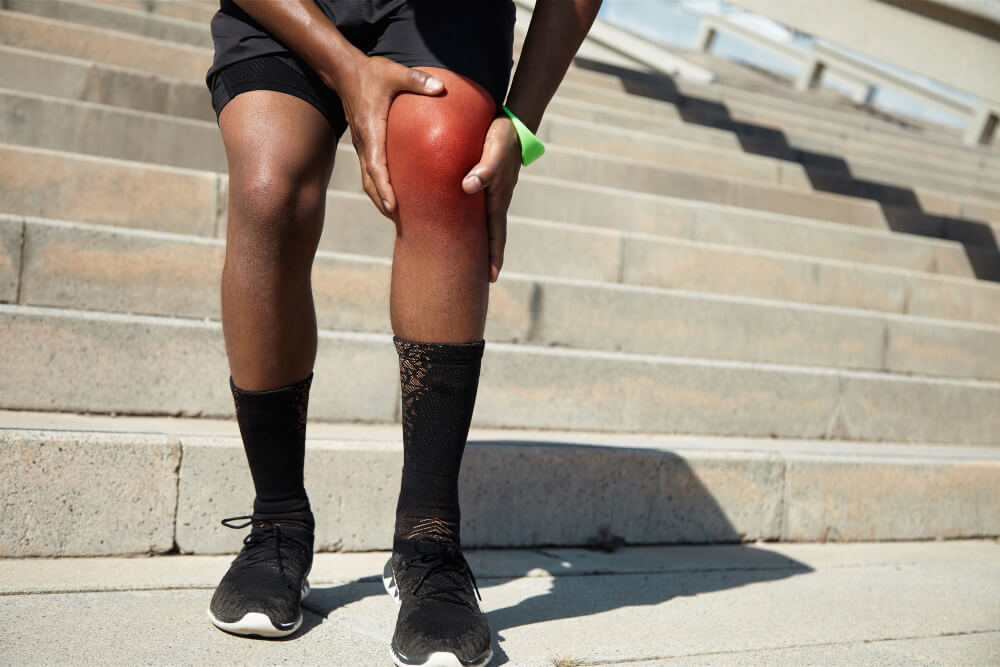Understanding Meniscus Tears and Ruptures: Symptoms, Treatment, and Recovery
The meniscus is a crucial component of your knee joint, acting as a shock absorber and stabilizer. It’s a crescent-shaped piece of cartilage located between the shinbone (tibia) and thighbone (femur). Unfortunately, the meniscus is susceptible to tears and ruptures, leading to pain and limited knee function. This article delves into everything you need to know about meniscus injuries, from understanding the types and symptoms to exploring treatment options and navigating the path to recovery.
Meniscus Anatomy and Function
The knee joint is a complex hinge joint that facilitates movement like bending, straightening, and rotation. Two C-shaped wedges of cartilage, the medial and lateral meniscus, reside within the joint.
- Medial meniscus: Located on the inner side of the knee, it’s more prone to tears due to its attachment to ligaments.
- Lateral meniscus: Situated on the outer side of the knee, it experiences less stress but can still tear.
The meniscus plays several vital roles in the knee:
- Shock absorption: It cushions the impact between the shinbone and thighbone during activities like walking, running, and jumping.
- Joint stability: The meniscus helps distribute weight and stabilize the knee joint, preventing excessive bone-on-bone contact.
- Lubrication: The meniscus aids in lubricating the joint by allowing smooth gliding of the bones.
Types of Meniscus Tears and Ruptures
Meniscus tears and ruptures can occur in various ways, impacting different areas of the meniscus. Here’s a breakdown of the common types:
- Horizontal tears: These tears run parallel to the meniscus surface, often occurring in younger individuals due to sudden twisting movements.
- Bucket handle tears: Resembling a bucket handle, this tear disrupts the meniscus structure, causing the torn portion to detach and move within the joint, potentially locking the knee.
- Flap tears: A flap of meniscus tissue becomes partially detached, but remains connected at one end. These tears can cause catching or locking sensations in the knee.
- Radial tears: These tears extend from the outer edge of the meniscus towards the center and are more common in older adults due to degenerative wear and tear.
- Root tears: Occurring where the meniscus attaches to the shinbone, these tears are complex and often require surgical repair.
Symptoms of Meniscus Tears and Ruptures
The symptoms of a meniscus tear or rupture can vary depending on the severity and location of the injury. Common symptoms include:
- Pain: Pain along the joint line, often described as a sharp ache or stabbing sensation, is a prominent symptom.
- Swelling: Inflammation and fluid buildup within the joint can cause noticeable swelling.
- Stiffness: Difficulty bending or straightening the knee fully due to pain and inflammation.
- Catching or locking: The torn meniscus fragment may get wedged within the joint, causing the knee to lock in a bent position.
- Popping sensation: Some individuals report hearing a popping sound at the time of the injury.
- Instability or weakness: The knee may feel unstable or weak, making it difficult to bear weight or maintain balance.
It’s important to note that not everyone experiences all these symptoms. If you suspect a meniscus tear or rupture, consulting a healthcare professional for a proper diagnosis is crucial.
Diagnosis of Meniscus Tears and Ruptures
Diagnosing a meniscus tear or rupture typically involves a combination of:
- Physical examination: Your doctor will assess your knee for tenderness, swelling, range of motion, and specific maneuvers to identify the location and severity of the tear.
- Imaging tests: X-rays are usually used to rule out bone fractures. Magnetic resonance imaging (MRI) provides detailed images of the soft tissues like the meniscus, revealing the location and type of tear.
Treatment Options for Meniscus Tears and Ruptures
The approach to treating a meniscus tear or rupture depends on several factors, including:
- Severity of the tear: Small, stable tears may heal on their own, while larger or unstable tears may require surgical intervention.
- Location of the tear: Tears in the outer third of the meniscus have a better blood supply and may heal better than those in the inner, poorly vascularized zone.
- Age and activity level: Younger, active individuals may benefit more from surgery to restore full function, while older adults with less demanding lifestyles might opt for conservative treatment.
Here’s an overview of the treatment options available:
Non-Surgical Treatment
For many meniscus tears, especially smaller, stable ones, non-surgical treatment is often the preferred approach. This approach focuses on reducing pain, inflammation, and promoting healing without resorting to surgery. Here’s a breakdown of the key components of non-surgical treatment:
- Rest and Activity Modification: Initially, your doctor will likely recommend rest to allow the torn meniscus to heal. This doesn’t necessarily mean complete immobilization, but avoiding activities that aggravate the injury, like running, jumping, or deep squatting. Low-impact activities like swimming or cycling can be helpful for maintaining mobility without excessive strain.
- Pain Management: Over-the-counter pain medication like ibuprofen or acetaminophen can help manage pain and inflammation. Your doctor may also recommend stronger pain medication or a cortisone injection for more severe cases.
- Ice Therapy: Applying ice packs to the affected area for 15-20 minutes at a time, several times a day, can help reduce pain and swelling. Wrap the ice pack in a towel to prevent skin irritation.
- Compression: Wearing a knee brace can provide compression and support to the knee joint, promoting healing and reducing swelling. Your doctor can advise on the appropriate type of brace for your specific injury.
- Physical Therapy: Physical therapy plays a crucial role in non-surgical treatment. A physical therapist will design a customized rehabilitation program to:
- Improve range of motion and flexibility in the knee joint.
- Strengthen the muscles surrounding the knee joint, which improves stability and reduces stress on the meniscus.
- Enhance proprioception, also known as body awareness, to help regain balance and prevent future injuries.
- Lifestyle Modifications: Maintaining a healthy weight reduces stress on the knee joint. Additionally, quitting smoking can improve blood flow and promote healing.
Benefits of Non-Surgical Treatment:
- Less invasive and avoids the risks associated with surgery.
- Shorter recovery time compared to surgery.
- More cost-effective approach.
- Effective for many smaller, stable tears.
However, non-surgical treatment isn’t always the answer. Consider surgery if:
- You experience a large, unstable tear that significantly impacts your daily activities.
- The tear is in a location that hinders healing (inner, poorly vascularized zone).
- You have persistent pain and swelling despite conservative treatment for several weeks.
- You are young and active, and your lifestyle demands a fully functional knee.
The decision for surgery should be made in consultation with your doctor, weighing the benefits and risks of both surgical and non-surgical approaches. for more details visit: https://specialtycareclinics.com/urgent-care/


